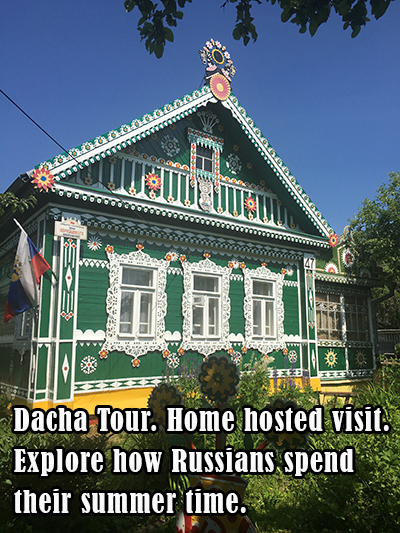GENERAL INFORMATION
In 1991 the USSR broke apart and Russia became an independent country. Today Russian Federation is the world ‘s largest country in both total area – 6,592,800 sq mi – and geographic extent. Its borders measure more than 12,500 mi. Russia constitutes more than one-ninth of the world’s land area and nearly twice the area of the United States or China. Russia stretches across parts of two continents, Europe and Asia, with the Ural Mountains and Ural River marking the boundary between them. Russia has the longest continuous coastline of any country in the world, it stretches 23,400 mi.
Russia’s total population is 144,978,570, making the country the sixth most populous, after China,India, the United States, Indonesia, and Brazil. Russians form the greatest percent of population – 81.5%, other nationalities are: Tatar 3.8%, Ukrainian 3%, Chuvash 1.2%, Bashkir 0.9%, Belarus 0.8%, Moldavian 0.7%, other 8.1 %. The overall population density of Russia is 22 persons per sq mi. More than ten cities, most in European Russia, have more than 1 million inhabitants. The largest city by far is Moscow, the capital. The next largest city is Saint Petersburg, a leading port and major industrial center, it served as the nationall capital from 1712 to 1918.
In general, Russia’s climate is similar to that of Canada. Much of the land lies north of the 50th parallel of latitude and far from the moderating influences of oceans. Similar to Canada, although colder and with greater temperature extremes in many places, most of Russia has a harsh continental climate.
Mineral wealth is considerable: Russia’s mineral resources are unmatched by any other country. Russia’s forests, located mostly in Siberia, cover more than two-fifths of the country’s total territory, and account for nearly one-fourth of the world’s total forested area.
NATIONAL HOLIDAYS:
1 January |
New Year | 7 January | Christmas |
| 23 February | Defender’s of Motherland day | 1 May | Spring and Labor Day |
| 9 May | Victory Day(the Great Patriotic War, 1941-1945) | 8 March |
International women’s day |
| 12 June | Independence Day, Day of Russia | 4 November | Day of Popular Unity |
THE BASICS AND WHAT EVERYONE NEEDS TO KNOW
LOCAL TIME: Russia has 11 time zones and Moscow and St. Petersburg are in the same time zone: From April through most of September, Moscow and St. Petersburg are 8 hours ahead of U.S. Eastern Daylight Time, 11 hours ahead of U.S. Pacific Daylight Time.
MONEY: the national currency is the RUBLE (RUR). Banknotes come in denominations of 10, 50, 100,500, 1000 and there are 1, 2, 5 and 10 RUR coins. There are 100 kopeks to every ruble. ATMs can be found at all metro stations, banks, and large department stores and hotels. Credit card use is still in its infancy and not all establishments will take them. Always have cash as back up, as in smaller shops, museums, taxis, etc. the law dictates you must pay in Russian Rubles. If you are not a shopper, change about $50 to begin with. If you are a shopper you will want to change about twice as much as that at first. Do not change too much money. Rubles are not to be taken out from the country. You may be short of time to change the rubles for dollars before leaving Russia, though you may always use rubles for tipping.
PASSPORT: Don’t take your original passport with you it’s quite enough to have it ‘s Xerox-copy. The chance you may need it is a rare one.









